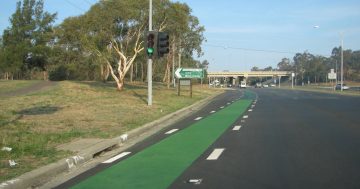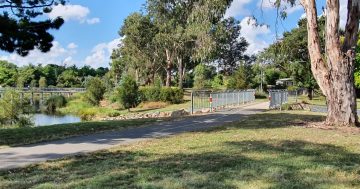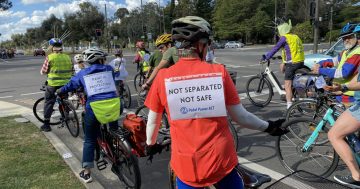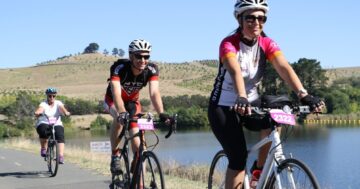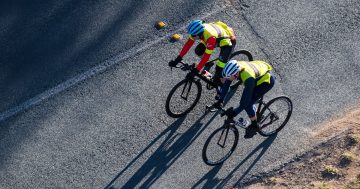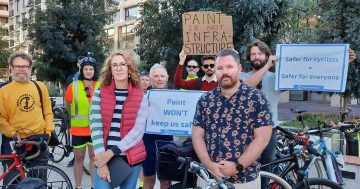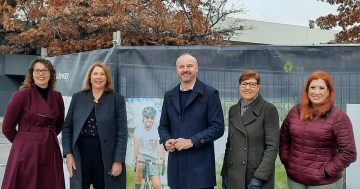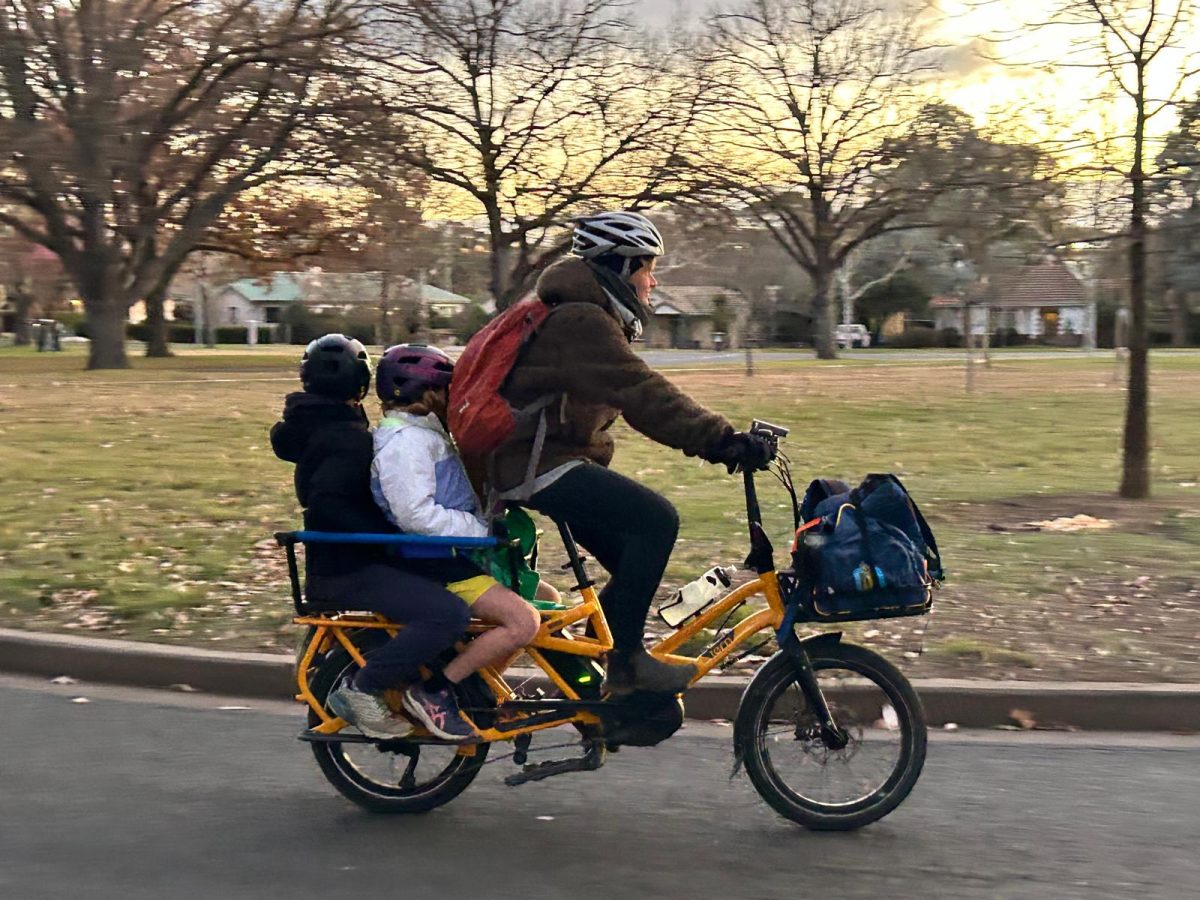
Canberra cyclists have to put up with unpleasant experiences, hazards and obstacles on paths, bicycle lanes and roads that make cycling harder, slower and more dangerous. Photo: Grit Schuster.
Personal transport – such as our cars – is Australia’s fastest-growing source of greenhouse gas emissions contributing to climate change.
One of the alternatives, cycling, is a fun, healthy and more sustainable mode of transport, but it can be scary and frustrating, which turns people off. The upcoming ACT election provides the opportunity to create an equitable multi-modal transport system.
I cycle every day. My family’s main means of transport is an electric-assist cargo bike we use for most of our commutes to school, work and after-school activities, as well as weekend sports and shopping, health appointments and more. We accumulated over 14,000 km in three years and saved 2100 kg of carbon dioxide-equivalent (CO2e) from entering the atmosphere compared to having driven the same distance in an average-sized motor vehicle.
We experience many beautiful moments riding through the wonderful bush capital, but we often feel vulnerable and obstructed. Canberra cyclists have to put up with unpleasant experiences, hazards and obstacles on paths, bicycle lanes and roads that make cycling harder, slower and more dangerous.
Cars are mostly prioritised in traffic flow, forcing cyclists to breathe toxic exhaust fumes while waiting for green lights or a safe gap. Cyclists have to be extremely defensive, always trying to anticipate how the design of road infrastructure or a driver’s mistake, like a motorist’s blind spot, may put them at risk of serious injury or even death. Remember, cyclists don’t have any protective metal or airbags around them.
Shared paths are generally a safer option for cyclists, but obstructions from construction sites, parked motor vehicles, as well as broken paving, muddy and slippery surfaces, sharp corners, steep curbs, fallen branches, broken glass and so on can be dangerous, not just to cyclists, of course, but also to oblivious pedestrians and dogs.
The lack of connectivity of bike paths forces cyclists onto roads or much longer, slower off-road routes.
All this can be intimidating and may prevent people from choosing to replace car trips with active transport.
Canberra urgently needs an equitable, multi-modal transport system. This would result in fewer cars clogging up the roads and polluting our air and climate. However, the planning and building of active travel infrastructure progresses very slowly.
Pro-cycling policies and initiatives, such as those advocated by Pedal Power ACT, Living Streets Canberra, and the Make The Move program, could quickly make cycling, walking and scooting a more attractive option for transportation.
Here are some relatively simple, low-cost actions to immediately promote safer and more convenient cycling.
The ACT Government could reprogram traffic signals at selected cycle-path intersections to prioritise active travellers in traffic flow. This would shorten exposure to hazardous fumes and make trips quicker.
The government should run a campaign to raise awareness about the vulnerability of cyclists and encourage motorists to keep cyclists safe.
The government should promote and incentivise active transport for shorter trips, including promoting quiet streets, creating car-free and shared low-speed zones, and implementing regular ride-or-walk-to-school/work days (not just once a year!)
Similar simple measures have been implemented with success in a number of cities. Examples include:
- Amsterdam implemented a 30 km/h speed limit for motor vehicles on 80 per cent of its roads – a sign of the city’s commitment to making its streets safer for everyone.
- In Paris, cycling traffic has increased by 166 per cent, thanks to bold political leadership matched by the proper levels of funding and infrastructure building.
- In Munich, a city-wide campaign encouraged people to travel by bicycle, and numbers show that concerted investments in behaviour change can have an impact.
The Conservation Council ACT Region Transport Working Group is calling for all candidates in the ACT election to commit to rapidly building an equitable multi-modal transport system that supports more active travel and reduces emissions.
Grit Schuster joined the Conservation Council ACT Region (CCACTR) team in 2023, following her passion to protect our natural environment. The CCACTR is the ACT region’s leading environmental advocacy organisation and hub for community groups, whose mission is to protect nature and create a safe climate future in the ACT and region.












